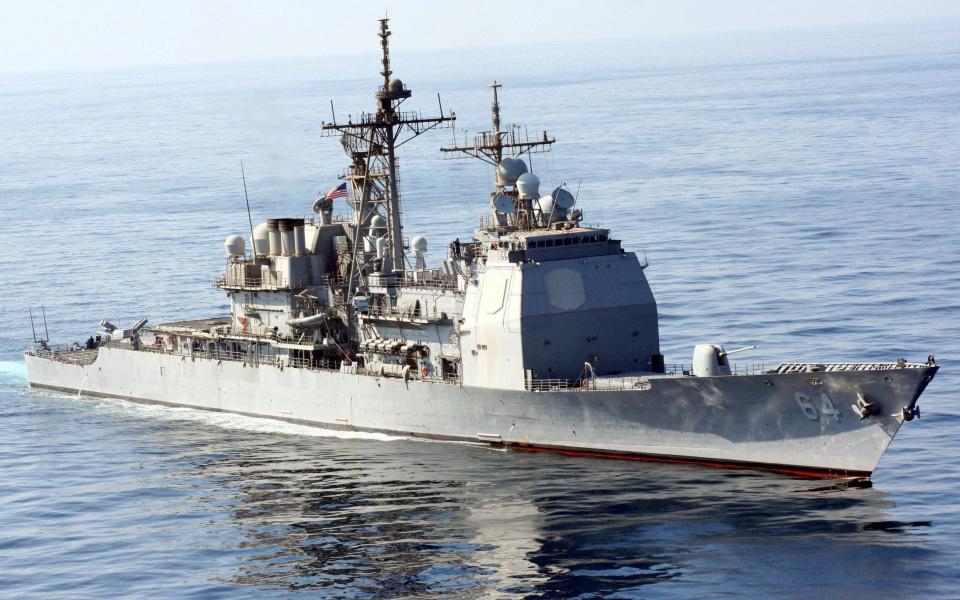

Sometime this year, the Japanese navy plans to lay the keel for the first in a new class of missile-armed warship. The two ships could be huge – potentially the biggest surface warships in the Asia-Pacific region or even the world.
They might be the first surface warships to rival China’s massive Type 055 Renhai-class cruisers. But only if Japanese leaders let the new ships fight.
The so-called Aegis System Equipped Vessels, or ASEVs, are – as their designation implies – designed to carry the American-made Aegis fire-control system, which combines powerful radars and data links to direct potent missiles capable of intercepting drones, aircraft, missiles and even ballistic warheads or satellites beyond the atmosphere.
The Aegis system is the backbone of the US military’s missile-defence force, which includes ships at sea as well as installations on land. Paired with the massive ASEV hulls – each displacing potentially more than 10,000 tons of water – the latest version of Aegis should result in the most capable missile-defence ships in the world.
And as a bonus, these ships could do more than shoot down missiles. That’s because their most flexible compatible missile, the American-made SM-6, is equally effective against targets in the air, at sea and on land. It is also thought to be one of the few systems capable of defence against hypersonic missiles.
The ASEVs are a recent development. As recently as 2020, Japan planned to install two Aegis systems in ground facilities on the country’s west coast. These Aegis Ashore installations would have freed up the Japanese navy’s eight Aegis-equipped destroyers to do more than merely steam in tight circles in the Sea of Japan, waiting for North Korea or China to launch ballistic missiles toward Japan.
An Aegis Ashore system – the US government operates two in Europe – takes the guts of a US Navy destroyer including the radar, vertical launch cells and SM-3 anti-ballistic interceptor missiles and crams them into unassuming buildings.
The Aegis fire-controls tie all the subsystems together. An Aegis Ashore can, in theory, knock down incoming ballistic missiles from hundreds of miles away.
Communities around the planned Japanese Aegis Ashore sites objected to spent SM-3 boosters raining down on their homes. With protests intensifying, the Japanese government cancelled Aegis Ashore in June 2020 – and promptly pivoted to the ASEV project as an alternative.
Japan had already spent $300 million on two SPY-7 radars for the ashore missile bases. The plan is to add the radars to a new, bigger variant of the navy’s existing Maya-class destroyer. A Maya has 96 vertical launch cells, usually loaded with SM-3 missiles. A larger ASEV could, in theory, pack even more cells.

The ASEVs, each of which could cost $2.4 billion, would take turns patrolling the Sea of Japan, alert for enemy missile launches. As with the abandoned Aegis Ashore bases, the idea is for the dedicated missile-defence ships to free up smaller destroyers for other tasks.
There’s no reason the ASEVs couldn’t perform other tasks, however. The ships’ Mark 41 launch cells are compatible with a wide array of missile types, including Tomahawk land-attack cruise missiles. Japan has been buying huge consignments of SM-3s, SM-6s and Tomahawks from the United States.
An ASEV packed with a hundred or more SM-3s, SM-6s and Tomahawks would be potentially the biggest and most powerful surface warship in the Asia-Pacific, if not the world – possibly outweighing and outgunning the Chinese navy’s Renhais with their 112 missile cells.
The US Navy’s 9,800-ton Ticonderoga-class cruisers – the big dogs of the seas for decades – have no fewer than 122 missile cells, but these ageing vessels are rapidly being retired. If the ASEVs do indeed outgun China’s cruisers, they will soon be the biggest, baddest surface combatants afloat. Warship buffs will recall the situation during World War II, when the Japanese super-battleships Yamato and Musashi – the largest big-gun battleships ever built, mounting the heaviest ever naval guns – held a similar position.
The first ASEV should begin construction soon and commission as early as 2027; the second could follow a year later. The radars, missiles and Aegis fire-controls are all ready. There’s no technological reason the ASEVs can’t dominate Pacific waters starting later this decade.
But there are political reasons. Successive Japanese administrations have been slowly reinterpreting Japan’s post-World War II constitution in order to soften its pacifist edicts and allow Japanese forces to conduct offensive operations in addition to defensive ones.
The process is politically fraught … and incomplete. It’s possible to imagine Tokyo limiting the ASEVs’ roles to strictly defensive ones, firing SM-3s and SM-6s at incoming enemy missiles. Just because the giant ships could go on the attack, doesn’t mean they will.
EMEA Tribune is not involved in this news article, it is taken from our partners and or from the News Agencies. Copyright and Credit go to the News Agencies, email news@emeatribune.com Follow our WhatsApp verified Channel









